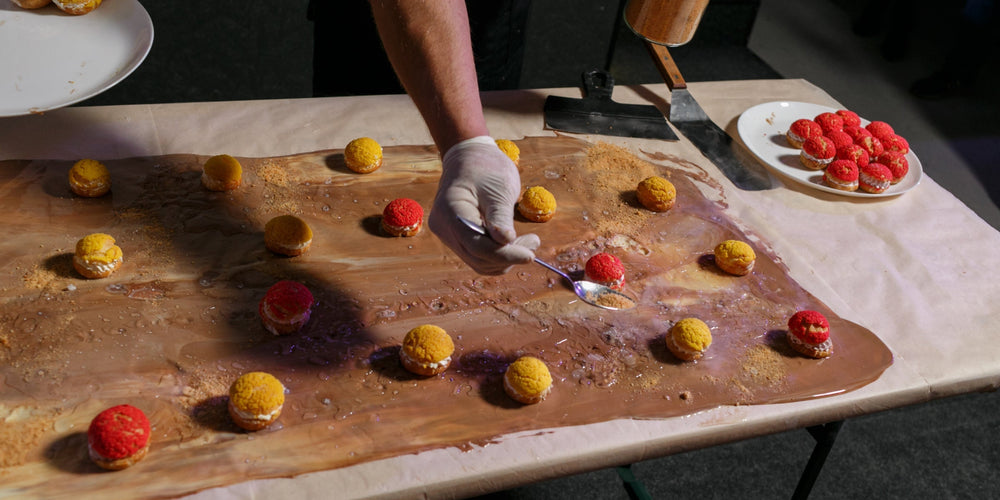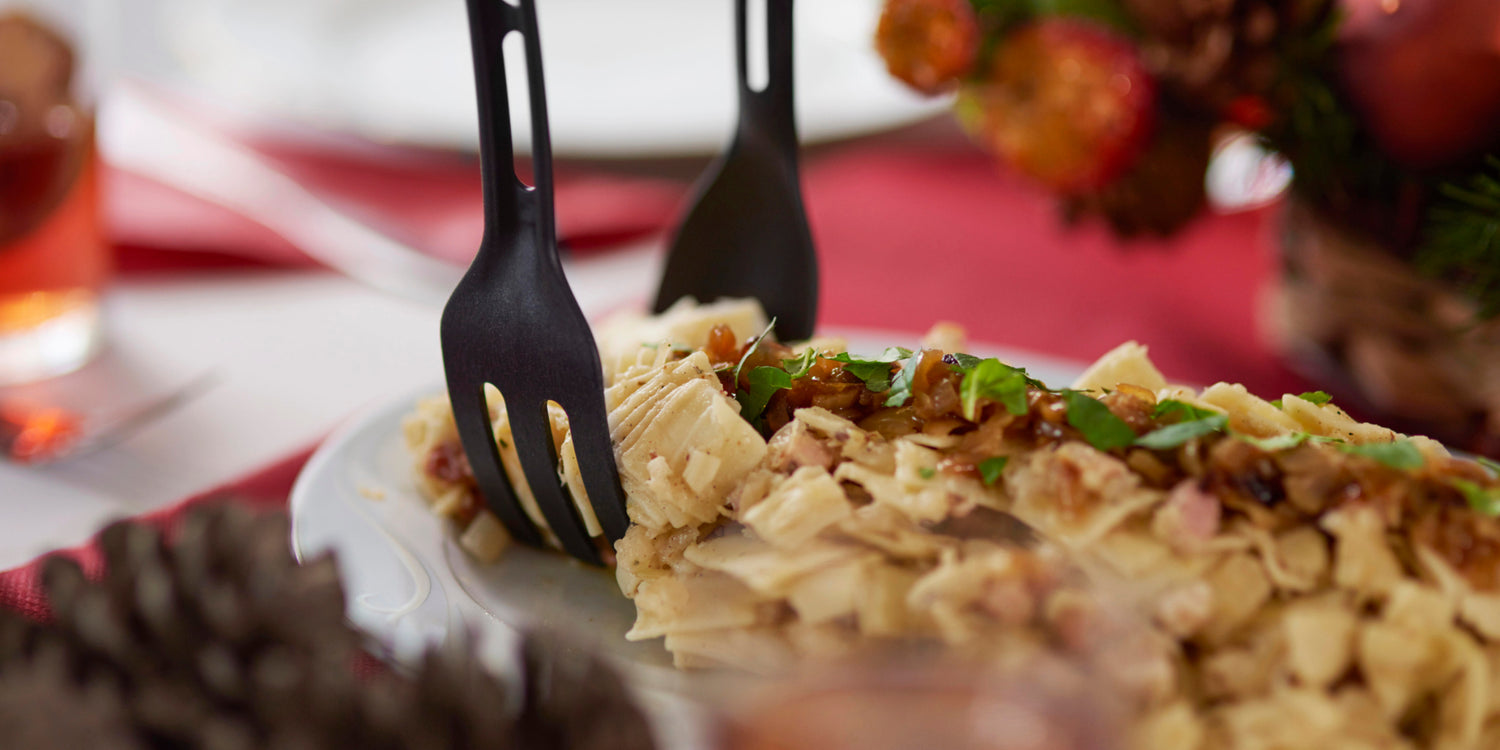Culinary Mad Scientists: Experimenting with Flavor Combinations

Stay tuned to our latest news
Are you tired of the same old recipes and flavor profiles? Do you find yourself craving something new and exciting in the kitchen? Luckily, the rules of cooking are mere suggestions, and the culinary world still has plenty of opportunities for new and flavorful dishes. After all, the pursuit of flavor reigns supreme when it comes to a delightful mealtime.
So, let's learn more about the art of experimental cuisine, exploring new flavor combinations and pushing the boundaries of what's possible in the kitchen. Whether you're a seasoned home cook or a budding food enthusiast, we’ll transform ordinary flavors into new and exciting combinations.
What Is Experimental Cooking?

Experimental cooking is a creative and innovative approach to the culinary field that involves combining flavors and ingredients in unique and unexpected ways. As the name suggests, it is a form of cooking that embraces experimentation, encouraging pushing the boundaries of traditional recipes and techniques.
In this cooking method, chefs are encouraged to think outside the box and explore the endless possibilities that exist in the culinary world. It is a method that encourages creativity and innovation, as chefs strive to create dishes that are not only delicious but also visually stunning and thought-provoking.
Combining flavors is at the heart of experimental cooking. Chefs experiment with different pairings of sweet, salty, sour, and bitter flavors to create well-balanced and interesting taste profiles. They may also incorporate unusual ingredients, such as exotic spices or uncommon fruits and vegetables, into their dishes to add a touch of novelty and surprise.
The importance of experimental cooking lies in its ability to challenge the status quo and inspire culinary innovation. By breaking away from traditional recipes and techniques, chefs can develop new and exciting dishes that excite and captivate diners. It encourages chefs to constantly push the boundaries of their creativity, resulting in a dining experience that is truly unique and memorable.
How Do Taste Buds Perceive Flavor?

Taste buds play a crucial role in how we perceive flavor. They are sensory organs located on the tongue that detect and identify different tastes such as sweet, sour, salty, bitter, and umami. The perception of flavor goes beyond the taste buds alone and involves a complex interplay of various factors.
Chemical compounds are responsible for creating flavor profiles. These compounds are present in the ingredients we consume and interact with the taste buds. For example, the sweetness of sugar is detected by taste buds when sugar molecules bind to specific receptors on the tongue. Similarly, sour taste is perceived when acidic compounds stimulate taste buds.
The interaction of ingredients can produce new flavors. When two or more ingredients are combined, their chemical compounds interact and create unique flavor profiles. This is the basis of culinary creativity. For instance, a combination of tomatoes and basil can produce a fresh and aromatic flavor that is different from the individual ingredients.
Balancing and contrasting sensory experiences, such as aroma, texture, and mouthfeel, is also crucial in the perception of flavor. Aroma contributes significantly to the overall flavor experience. When we eat, the aroma of the food travels to our olfactory receptors, enhancing the perception of taste. Texture and mouthfeel, on the other hand, add a tactile dimension to the eating experience. The combination of a crisp texture with a rich aroma can create a harmonious and satisfying flavor profile.
What Is Food Pairing?

If you’re interested in experimenting with flavors, it’s better to have an idea on how to pair foods first. Food pairing is a culinary concept that involves intentionally combining two or more ingredients that complement and enhance each other's flavors. This practice aims to create harmony and balance in a dish by selecting ingredients that have compatible taste profiles.
By understanding the principles of flavor chemistry, food pairing allows chefs, home cooks, and food enthusiasts to create unique and delicious flavor combinations that can elevate the dining experience.
Whether it is contrasting flavors or complementary ones, food pairing opens up a world of possibilities for creating memorable and mouthwatering dishes. From classic pairings like wine and cheese to more unconventional combinations, food pairing offers endless creative opportunities for chefs to create culinary masterpieces that stimulate the taste buds.
What Are Flavor Profiles in Cooking?
Flavor profiles in cooking refer to the combination of different tastes and flavors that are present in a dish. They are essential in creating delicious dishes as they give depth and complexity to food, making each bite a sensory experience.
The main taste profiles include sweetness, fattiness, saltiness, acidity, and bitterness. These taste profiles interact and complement each other to create a harmonious balance of flavors.
Sweetness brings a pleasant and sugary taste to dishes and can come from ingredients like sugars, fruits, and even certain vegetables. Fattiness adds richness and creaminess to a dish, often provided by ingredients like butter, oils, or cheeses. Saltiness, as the name suggests, enhances the overall taste and is usually provided by salt or other salty ingredients.
Acidity adds a tangy and refreshing taste to recipes and is commonly found in ingredients like lemon juice, vinegar, or certain fruits. Lastly, bitterness adds complexity to dishes and comes from ingredients like bitter greens or coffee.
These taste profiles work together to create a well-rounded and delicious flavor. For example, the sweetness of caramelized onions can balance the acidity of a tomato sauce, while a touch of salt can enhance the overall taste of a rich and fatty dish.
How Good Flavor Combinations Can Contribute to Memorable Mealtimes?
Good flavor combinations can truly elevate the dining experience and contribute to memorable mealtimes. When it comes to food, taste plays a crucial role in creating long-lasting memories. The way certain ingredients interact with each other can either make or break a dish, and finding the perfect balance of flavors is key.
One of the ways to enhance flavors is by fine-tuning recipes. This involves carefully adjusting the proportions of ingredients and experimenting with different cooking techniques. By paying attention to the details and making small changes, chefs can transform an ordinary dish into something extraordinary. Incorporating unexpected pairings is another effective method. Combining contrasting flavors can create a harmonious balance that surprises and delights the palate. Whether it's the marriage of sweet and salty or the fusion of spicy and tangy, unexpected flavor combinations can make the dining experience truly memorable.
In addition to fine-tuning recipes and unexpected pairings, infusing dishes with innovative cooking techniques can take flavors to new heights. From sous vide to molecular gastronomy, the possibilities are endless. By exploring different cooking methods and pushing the boundaries of traditional techniques, chefs can unlock new dimensions of taste and texture. This kind of culinary innovation can make a significant impact on the overall flavor profile of a dish.
Furthermore, pairing sweet, sour, and umami flavors can create an intricate culinary adventure. The combination of these taste profiles can stimulate multiple taste receptors and provide a multidimensional experience. The sweet notes can provide a comforting familiarity, while the sour tones add a refreshing and tangy twist. Umami, often described as a deep and savory taste, adds richness and depth to the dish. Together, these flavor profiles can create a symphony of sensations that leave a lasting impression.
5 Tips on How to Use Herbs and Spices for Unique Flavor Combinations

Herbs and spices are the building blocks of extraordinary cuisine. Before trying your hand on some experimental dishes, here are five tips to help you harness the power of these flavorful ingredients and craft unique, mouth-watering flavor combinations that will have your taste buds singing.
- Understand flavor profiles: Familiarize yourself with different herbs and spices and their flavor profiles. Consider their intensity, heat, sweetness, and bitterness. By understanding how each ingredient contributes to the overall taste, you can create unique flavor combinations that add depth and complexity to your dishes.
- Embrace variety: Expand your spice rack and herb garden. The more diverse your collection, the more opportunities you have for experimentation. Be open to trying lesser-known herbs and spices, such as sumac, za'atar, or fenugreek. Mixing and matching different flavors will elevate your culinary creations.
- Consider cooking methods: Different cooking methods can affect the flavor of herbs and spices. Some flavors intensify when subjected to heat, while others lose their potency. Experiment with adding spices at different stages of cooking, such as toasting whole spices before grinding them, or adding delicate herbs at the end to preserve their freshness. By understanding how cooking methods interact with herbs and spices, you can achieve extraordinary results.
- Don't be afraid to experiment: It's important to be fearless and adventurous when working with herbs and spices. Try unexpected combinations, such as adding cinnamon to chili, or pairing thyme with sweet fruits. Trust your instincts and let your creativity guide you. Even if a combination doesn't work the first time, learning from your experiments will ultimately lead to exciting flavor combinations.
- Taste as you go: To achieve unique flavor combinations, taste your dish as you cook. Adjust the amount of herbs and spices to your liking and the flavor profile you desire. Remember, it's easier to add more flavor than to reduce it. By constantly tasting and adjusting, you can ensure that your dishes are well-balanced and packed with extraordinary flavors.
Takeaway
The world of experimental cuisine offers endless opportunities to elevate your culinary creations. By understanding and exploring flavor profiles, food pairings, and the intricate roles of taste buds, you can push the boundaries of traditional cooking and craft unique, memorable dishes. Embrace the creativity and innovation that comes with experimental cooking, and don’t be afraid to try new combinations of herbs, spices, and ingredients. Whether you are a seasoned chef or a home cook, the pursuit of new and exciting flavors will not only delight your taste buds but also transform your dining experiences into extraordinary culinary adventures.
Renpho Health Tips
-

Fueling Your Future: Practical Tips for Monitoring Nutrients and Defining Dietary Objectives
May 20, 2024
Read more >
-

Cooking Creatively: A Guide to Ingredient Substitutions in Recipes
May 15, 2024
Read more >
-

Nourishing Bonds: Wholesome Meal Plans for Thriving Kids and Happy Pets
May 8, 2024
Read more >
-

Right-Sizing Your Meals: A Beginner's Guide to Serving Sizes
May 6, 2024
Read more >
-

Game On for a Healthier You: How Gamification Boost Exercise Motivation
April 29, 2024
Read more >






